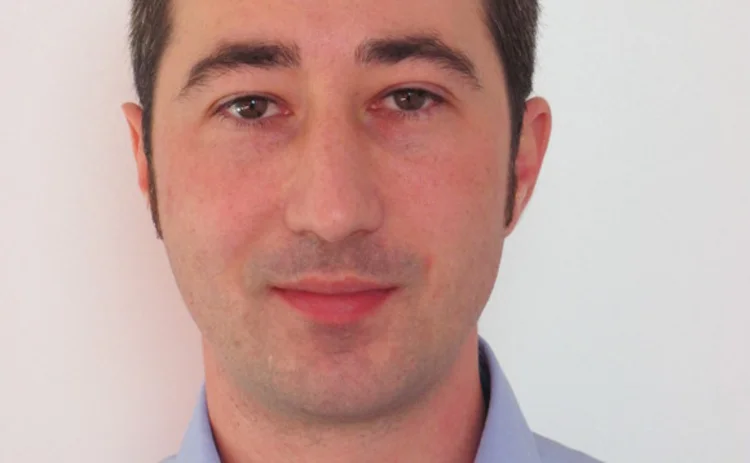BST Awards 2011: BI-SAM's Risk Initiative Q&A

Can you tell us about the risk-related elements of B-One?
Basically, we have three parts of B-One that cover the risk area. The first one is the ex-ante risk decomposition module. This module allows the calculation of the absolute and the relative risk through a significant range of financial indicators. In addition to this, we also offer the ability to manage risk via the what-if module. This module helps a fund manager to assess the impact of potential decisions on the forecasted risk. That's the first part of our offering. Then, we have an ex-post risk attribution model. This module focuses on the actual risk, the objective is twofold. The first is to provide a decomposition of the main risk indicators such as volatility, tracking error and some risk-adjusted performance indicators. The second objective is to provide tracking error attribution, so we highlight the portion of relative risk that can be attributed to management decisions. In fact, from this module and from the equity attribution, we can depict the whole picture of the portfolio in terms of return and risk, therefore we can tell the true story of the portfolio. The last part we have is the ex-ante and ex-post risk reconciliation. The objective of this module is to perform ex-ante and ex-post attribution, and then explain where the differences come from. That's our current offer, to cover risk.
And this last module was developed in conjunction with Covéa Finance?
Exactly. The ex-ante and ex-post risk reconciliation module has been developed in partnership with Covéa Finance.
Why did you bring them on board?
This model, what we call the AMPERE [Asset Management, Performance and Reporting] model in French, has been developed by a group of French asset managers, the club AMPERE. In the group we have Amundi, Covéa Finance, BNP, State Street, AXA Investment Management, Société Générale Gestion, among others. Covéa Finance was really active in this group and confident in this model, and they wanted to be the first to propose this solution to their investors, because they have some strong requirements from their own clients. We also had a strong desire to propose this analysis, which is the one reason why we decided to work in a strong partnership with Covéa Finance to develop the module.
What sort of timeframe are we talking about for its development?
We split the project in three phases. A first phase where we have transposed the theory into practical through several examples. This phase has been useful to validate the model and highlight some deficiencies. We worked with Covea Finance's teams to find acceptable solutions and bring robustness to this model. Once we reached a complete agreement on the model, we made the development. Finally, during the third phase, we made the tests with Covéa Finance. All of these three phases took about nine months.
So what is it that makes the model stand out?
The industry proposes either the ex-ante risk analysis or the ex-post risk analysis, but there is no solution that attempts to explain where the difference between the expected risk and the actual risk comes from. That is the originality of the approach. By using this model, we can explain where the difference comes from via two effects: an environment effect and a management decision effect.
Only users who have a paid subscription or are part of a corporate subscription are able to print or copy content.
To access these options, along with all other subscription benefits, please contact info@waterstechnology.com or view our subscription options here: https://subscriptions.waterstechnology.com/subscribe
You are currently unable to print this content. Please contact info@waterstechnology.com to find out more.
You are currently unable to copy this content. Please contact info@waterstechnology.com to find out more.
Copyright Infopro Digital Limited. All rights reserved.
As outlined in our terms and conditions, https://www.infopro-digital.com/terms-and-conditions/subscriptions/ (point 2.4), printing is limited to a single copy.
If you would like to purchase additional rights please email info@waterstechnology.com
Copyright Infopro Digital Limited. All rights reserved.
You may share this content using our article tools. As outlined in our terms and conditions, https://www.infopro-digital.com/terms-and-conditions/subscriptions/ (clause 2.4), an Authorised User may only make one copy of the materials for their own personal use. You must also comply with the restrictions in clause 2.5.
If you would like to purchase additional rights please email info@waterstechnology.com
More on Trading Tech
Editor’s Picks: Our best from 2025
Anthony Malakian picks out 10 stories from the past 12 months that set the stage for the new year.
The next phase of AI in capital markets: from generative to agentic
A look at some of the more interesting projects involving advanced forms of AI from the past year.
Will overnight trading in equity markets expand next year? It’s complicated.
The potential for expanded overnight trading in US equity markets sparked debate this year, whether people liked it or not.
WatersTechnology latest edition
Check out our latest edition, plus more than 13 years of our best content.
The total portfolio approach gains momentum: Building the right tech foundation for success
The rationale for the TPA, and the crucial role technology plays in enabling such an approach
Google, CME say they’ve proved cloud can support HFT—now what?
After demonstrating in September that ultra-low-latency trading can be facilitated in the cloud, the exchange and tech giant are hoping to see barriers to entry come down.
Institutional priorities in multi-asset investing
Private markets, broader exposures and the race for integration
BlackRock and AccessFintech partner, LSEG collabs with OpenAI, Apex launches Pisces service, and more
The Waters Cooler: CJC launches MDC service, Centreon secures Sixth Street investment, UK bond CT update, and more in this week’s news roundup.







